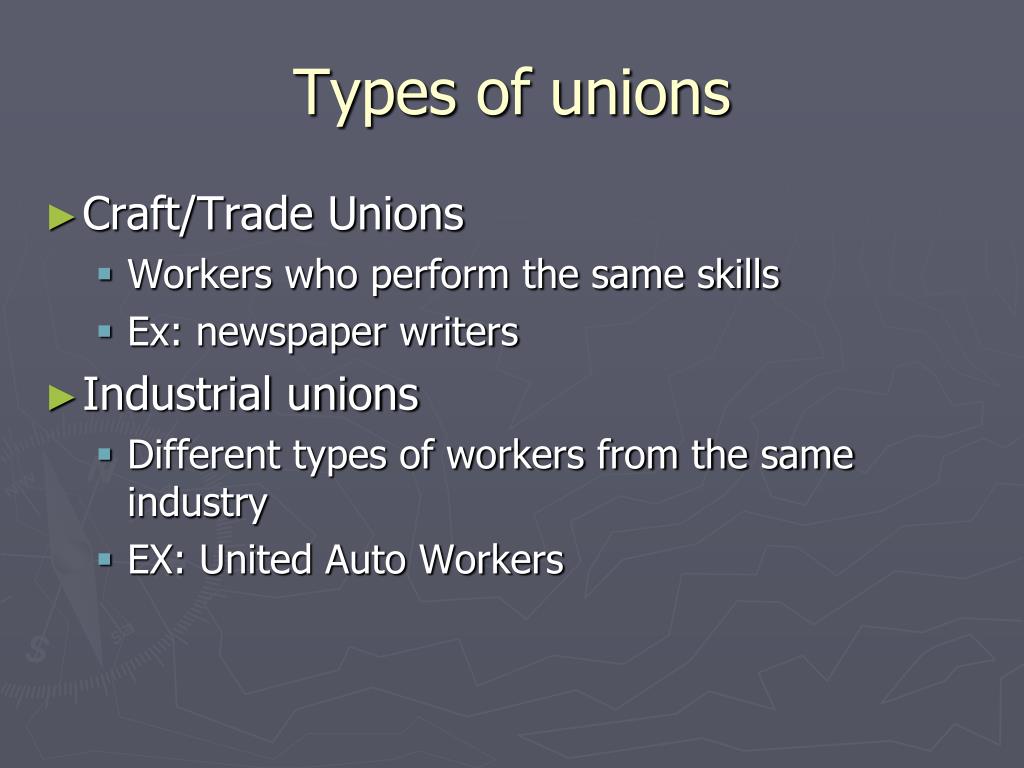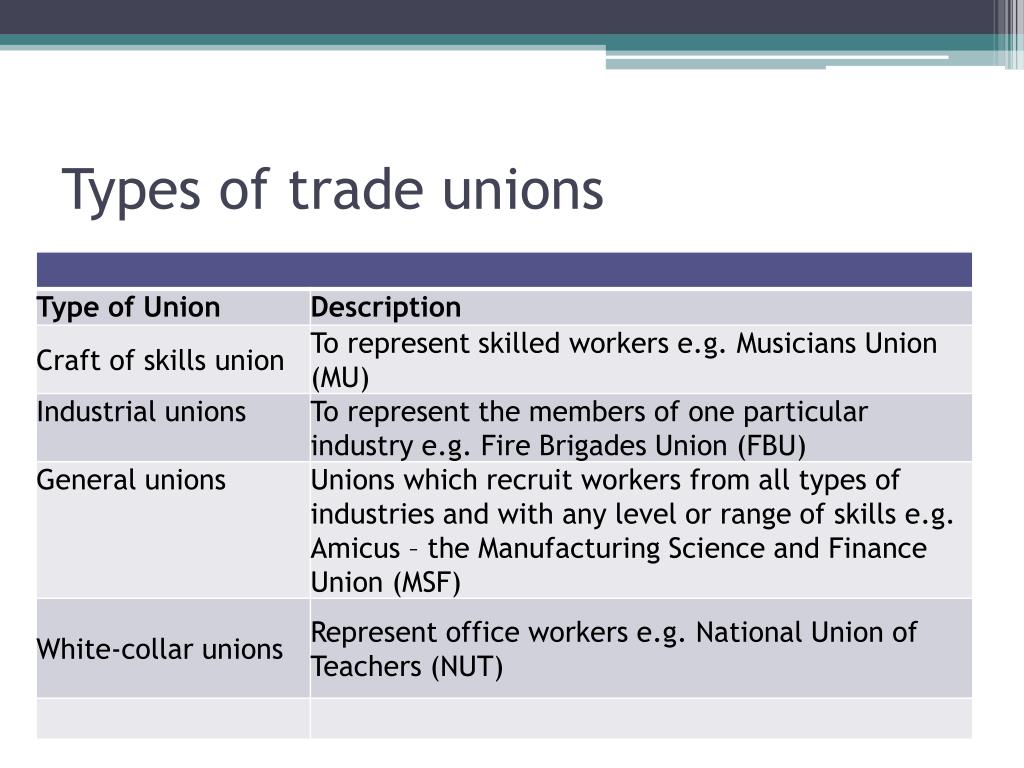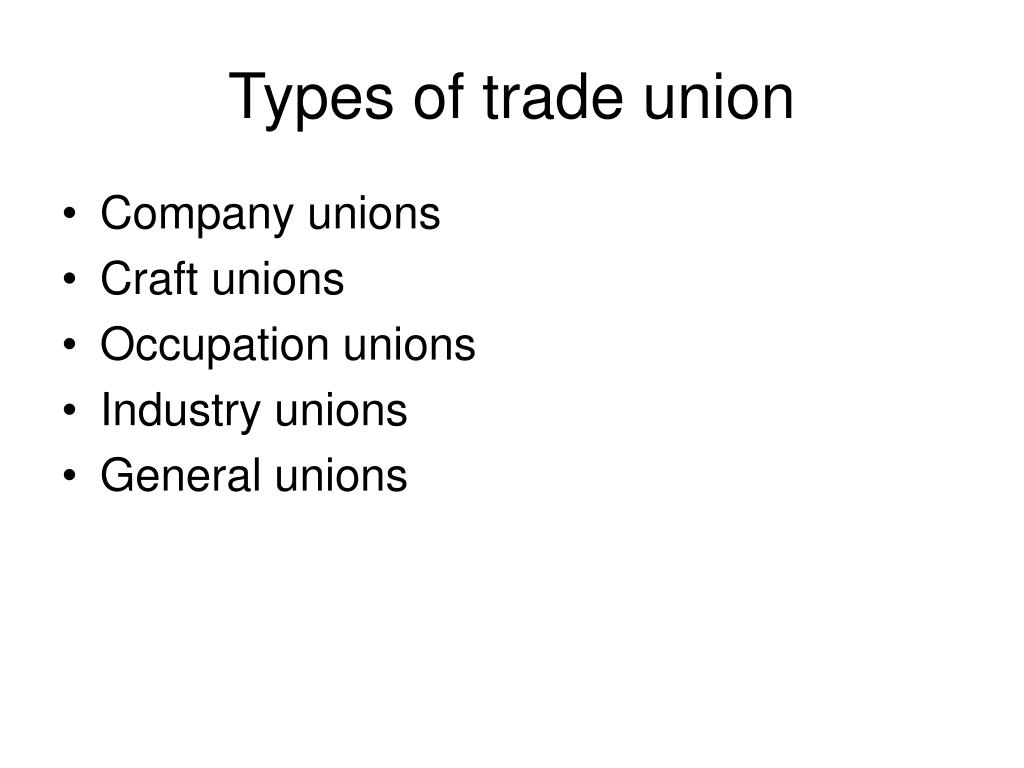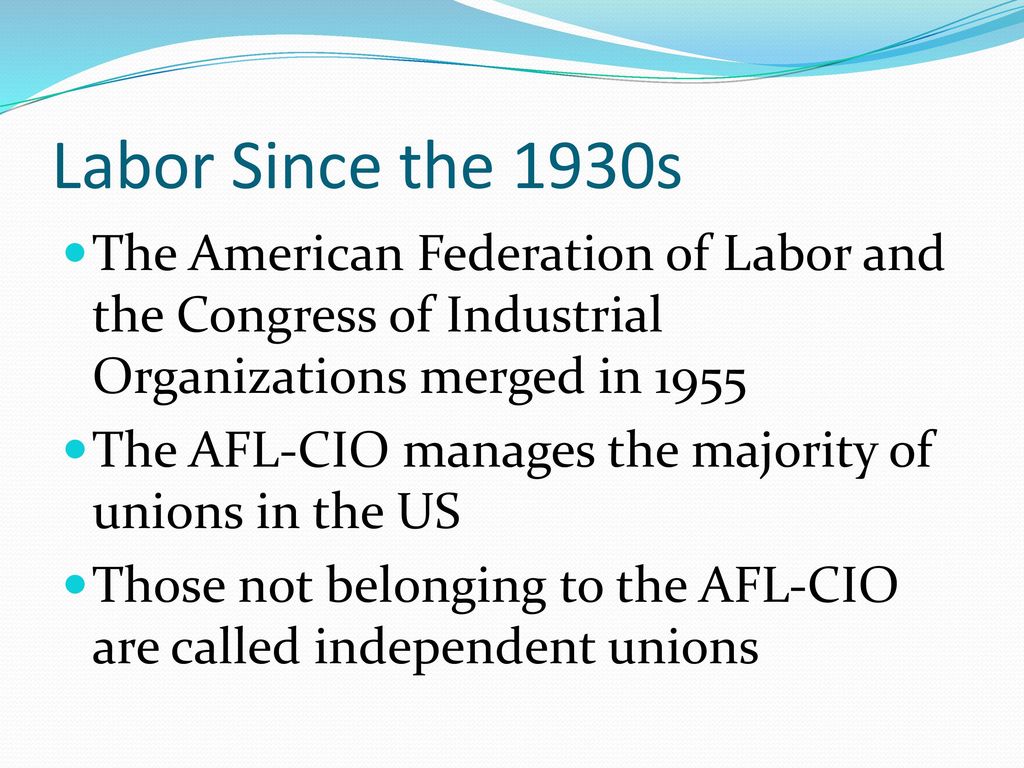How Do The Types Of Union Arrangements Differ
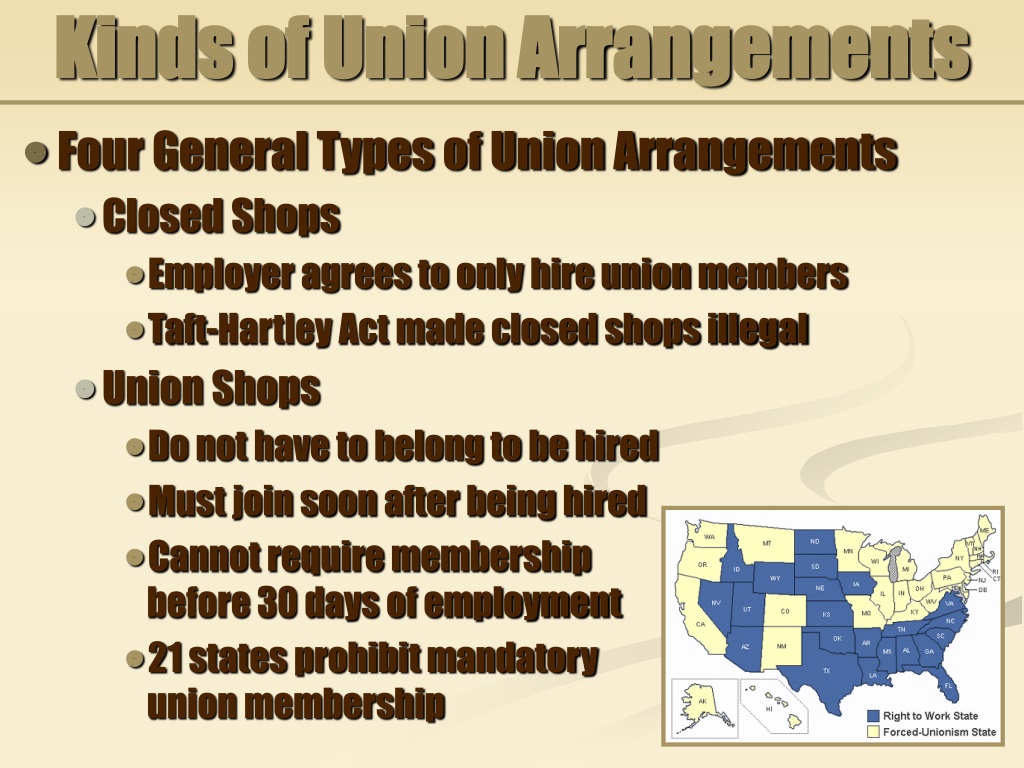
Imagine a bustling factory floor, the rhythmic hum of machinery a constant backdrop. Workers, united by a shared purpose and a desire for fair treatment, gather to discuss their future. At the heart of their conversation lies a single question: what kind of union arrangement best suits their needs and aspirations?
This article explores the diverse landscape of union arrangements, shedding light on the nuances that differentiate them. It examines the varying levels of representation, membership requirements, and bargaining power these structures offer, allowing workers and employers alike to navigate the complex world of labor relations with greater understanding.
The Foundation: Understanding Unions
Before delving into the specifics, it's crucial to grasp the fundamental role of unions. They are essentially organizations formed by workers to advance their collective interests regarding wages, working conditions, and other terms of employment. Unions act as a unified voice, negotiating with employers on behalf of their members to secure better outcomes than individual workers might achieve alone.
The legal framework governing unions varies significantly across countries and jurisdictions. In the United States, for example, the National Labor Relations Act (NLRA) provides the foundation for union formation and collective bargaining.
Types of Union Arrangements
The world of union arrangements is not monolithic. Several distinct models exist, each with its own characteristics and implications for workers and employers.
Closed Shop
The closed shop represents the most restrictive form of union arrangement. Under this model, employers can only hire individuals who are already members of the union. This arrangement is now largely illegal in the United States, except in certain industries such as construction.
Historically, closed shops were prevalent in industries with strong union presence. They guaranteed union membership and provided significant bargaining power.
Union Shop
A union shop allows employers to hire non-union members. However, these new hires are required to join the union within a specified timeframe, typically 30 to 90 days.
This arrangement aims to encourage universal union membership within the workplace. It ensures that all employees benefit from and contribute to the union's efforts.
Agency Shop
In an agency shop, employees are not required to join the union as a condition of employment. However, they must pay a fee to the union, often referred to as an agency fee or service fee.
This fee covers the costs associated with collective bargaining and contract administration, ensuring that all employees who benefit from the union's efforts contribute financially.
Open Shop
An open shop represents the most permissive arrangement. Employees are not required to join the union, nor are they obligated to pay any fees.
This model allows employees to choose whether or not to participate in union activities. It is sometimes referred to as a "right-to-work" environment.
Maintenance of Membership
A maintenance of membership arrangement requires employees who voluntarily join the union to remain members for the duration of the collective bargaining agreement. They may only resign from the union during a specified "escape period."
This provision aims to maintain union membership stability throughout the contract term. It prevent employees from joining the union to benefit from negotiations and then leaving afterward.
Check-Off Provisions
Check-off provisions are not a type of union arrangement per se, but rather a mechanism that facilitates union dues collection. Under this system, employers deduct union dues directly from employees' paychecks and remit them to the union.
This streamlines the dues collection process. It reduces the administrative burden on both the union and individual employees.
The Significance of Choice
The choice of union arrangement carries significant implications for both workers and employers. For workers, it impacts their rights, responsibilities, and the extent to which they can collectively bargain for better terms of employment.
For employers, it influences their ability to manage their workforce and negotiate labor agreements. The best arrangement often depends on the specific industry, company culture, and the preferences of the employees.
Right-to-work laws, which prohibit mandatory union membership or fees, have become a major point of contention in recent years. Supporters argue that they protect individual freedom of choice, while opponents contend that they weaken unions and lead to lower wages and benefits.
Beyond the Basics: Considerations and Context
The effectiveness of any union arrangement is also influenced by the broader economic and political landscape. Factors such as unemployment rates, inflation, and government regulations can all impact the bargaining power of unions and the outcomes they achieve.
Furthermore, the internal dynamics of a union itself play a critical role. Strong leadership, active membership participation, and a clear understanding of the members' needs are essential for a union to effectively represent its constituents.
It is important to note that these arrangements are not static, and can evolve over time through negotiation and legal challenges. The continuous reshaping of labor laws and collective bargaining agreements keeps this area dynamic.
Looking Ahead
As the nature of work continues to evolve with increasing gig economy and remote roles, the role of unions is being re-examined. Adapting to these new forms of work and ensuring fair treatment for all workers remains a key challenge.
Understanding the different types of union arrangements is crucial for fostering constructive dialogue between workers, employers, and policymakers. The ongoing conversation allows for informed decisions that promote a fair and productive workplace for all involved.
Ultimately, the most successful union arrangements are those that strike a balance between protecting workers' rights and ensuring the long-term viability of businesses. They create a collaborative environment where both parties can thrive.




